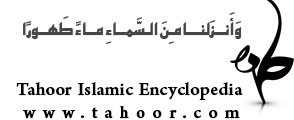
Keys of the invisible
“Mafatih al- Qayb” (Keys of the invisible) Known as “Great commentary” (Tafsir-e kabir) is on intellectual and theological commentary of the Koran composed in 12th and 13th centuries by Fakhr Razi.
It is one of the most significant exegeses of the Koran.
The author strongly defends “Ashariya” (the school of orthodox theology founded Abu Hasan Ashari) and rejects the views of “Mutazila” (name of religious theological movement founded at Basra by Wasil Ibn Ata).
The author
Abu Taleb Muhammad, known as: Fakhr al-Muhaqeqin (Honour of scholars) Fakhr al-Islam and Fakhr al-Din, great scholar (1282 – 1311) in Hilla – Iraq. He was son of “Allameh Helli” (prominent scholar).
He studied primary and common sciences of his own time in the presence of his father. He also studied philosophy, theology, logic, Hadith, intellectual & transmitted sciences and jurisprudence (Fiqh) & methodology (Osul); Helli studied all the sciences under his father and did not have any other masters.
He became an expert scholar at intellectual and transmitted sciences, therefore when he finished his education, asked his father to write a comprehensive book on jurisprudence.
Some scholars such as: “Noor Allah Shushtari” and “Fazel Hendi” believe that Fakhr al-Muhaqeqin at the time of writing the book was 10 years old or less and was a great “Mujtahed” (a person who possesses the aptitude to form his own judgement on questions concerning Islamic law), but this idea is wrong because as “Allameh Helli” (b. 1249) wrote in the book: “My son! I summarised the rules and commandments of Islam and explained them in an easy way, I am now 50 years old”.
Therefore the book was written in 1299 and Fakhr al-Muhaqeqin was 16.
Allameh Helli loved his son; he wrote the book “al Alfin” (Thousands) by request of Fakhr al-Din.
The book is on thousands intellectual and transmitted reasons on proving Imamte of Imam Ali (p.b.u.h) and thousands reasons on rejecting doubts of opponents and also many reasons on proving Imamate of other Imams.
Students:
Shams al-Din Muhammad Ibn Makki (Shahid-e Awal)
Seyyed Badr al-Din Madani
Sheikh Ahmad Bahrani
Seyyed Heidar Amoli
Seyyed Taj al-Din Ibn Ma’iyah
Zahir al-Din
Works:
All his works are the best scientific Shia books and most of them are explanation and glosses on his father’s (Allameh Helli) books:
1- Explaining Mubadi al-Osul “principles of methodology”
2- Explaining Tahzib al-Osul “refining methodology
3- Izah al-Fawaed Fi Hale Mushkelat al-Qawaed (On solving problems of commandments)
4- Fakhriyya treatise on “Niyyat” (purpose)
5- al-Kafiya al-Wafiya (On theology)
6- Masael-e Sadriyah
7- Sharh al-Mustarshedin
Fakhr al-Muhaqeqin died in 1369.
The book structure
The present exegesis book is known also as a theological encyclopedia.
Fakhr Razi applies an intellectual approach for explaining the
Koranic verses.
He also considers the views of different Islamic sects such as: Mutazila Jabriya, Ashariya, Imamiya, etc.
The book includes 32 chapters. The author stars exegesis of the Koran with commentary of the phrase” I take refuge from the damned Satan” Fakhr Razi explains commentary of each surah with the name
the surah the place of its descent , the number of verses and the relation between a verse and the previous verses.
The following are some of the subjects considered in “Keys of the invisible”
1- Faith and Islam and the differences between
2- Divine theology
3-seeing God
4-Divine Justice
5- Fatalism and free will
6-Fate and destiny
7- The miraculous aspect of the Koran
8-Gods will
9- Trinity
10- Shias belief on innocence of Imam
11- Innocence of prophets
12- Resurrection
13-Intercession of the Prophet Among commentators, Fakhr Razi tries more to explain the verses related to rain.
The later exegeses of the Koran have been influenced by “Keys of the invisible”
Sources :
Keys of the invisible
Shia encyclopedia